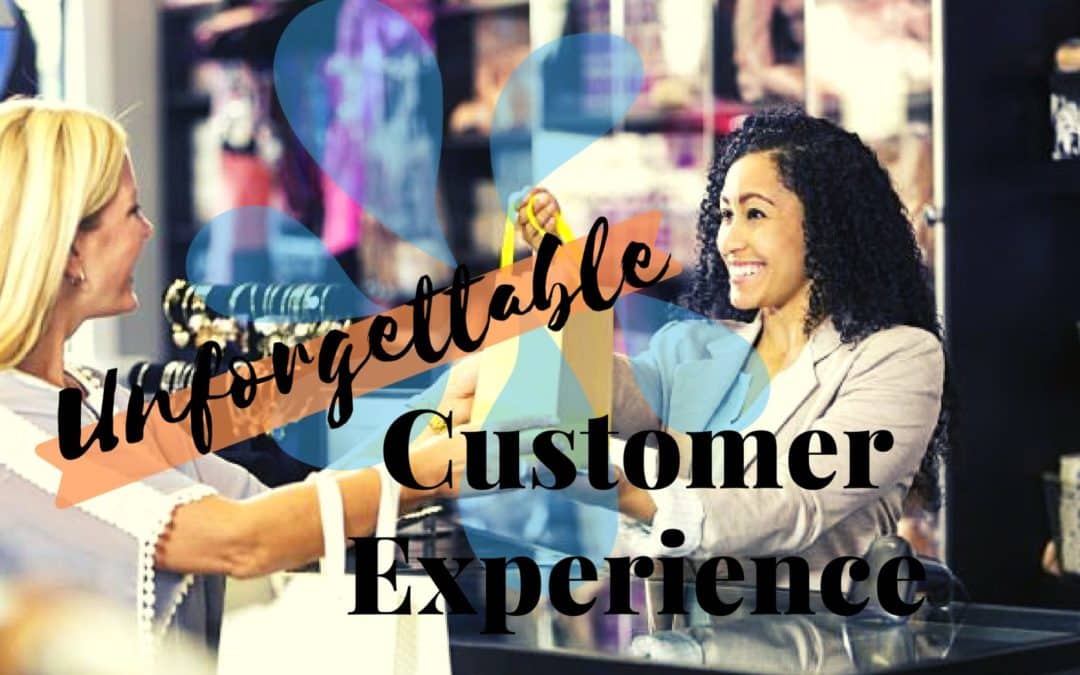“You really just need to sweat the small stuff.”
One of the most rewarding opportunities in maintaining a competitive advantage in any business can be achieved by developing a culture of excellence in customer experience.
As a matter of fact, companies with a successful customer experience strategy attain less customer turnover, higher overall revenues per customer, and higher levels of employee satisfaction as well.
To put it simply, HAPPY customers remain LOYAL.
And, loyal customers contribute directly to your bottom line and the overall well-being of the business and its employees.
Makes sense, right? After all, is it not logical that customers tend to stay longer with a brand that makes them happier?
This is why Great businesses make it their top priority to deliver exceptional customer experience in order to outperform their competitors.
Are you familiar with the Great Business Model (GBM)? Within the GBM, we have 12 key projects that we focus on in order to create, well, a Great Business.
One of these key projects is being Customer-Centric, hence the reason why in this article we explore customer experience, one of its key fundamentals.
Service Vs. Experience
Often, a customer’s first point of contact with any company is through an interaction with an employee. This can either be by visiting a store, speaking on the phone, chatting online, etc.
As such, this opportunity paves the way for a business to initiate its first engagement in excellent customer service.
However, customer service is only one aspect of the whole customer experience journey.
For instance, if you buy coffee at a shop and the employee taking your order is helpful and friendly, you could call that good customer service.
If on the other hand, your order arrives early maybe has a personalized note or even free donuts, then we call that an amazing customer experience!
That’s basically how to tell the two apart.
Like most things in today’s marketplace, the customer experience journey is always evolving and, thanks to technology, there are now many more ways to connect with customers.
Although customer service is still as important as ever, in fact, it could be regarded as simply being the minimum level required to maintain some level of competitiveness, it no longer holds the value it once did to truly differentiate your business.
Despite the many technological advancements that are on offer to businesses, it’s important to note that it’s still the little details that keep customers coming back.
It’s those small details that trigger customer to rationalize paying more because they feel there’s added value. It’s also these tiny attributes that keep them talking about your company and sending everyone they know to check you out.
Solidifying A Crystal-Clear Vision

In creating a customer experience strategy, the first step is to formulate a clear, customer-focused vision for your company. This is the set of statements that will act as the company’s guiding principle.
Your vision statement takes a “high level” look at the long-term hopes and aspirations of the business. Would you like a vision statement cheat sheet?
Once your vision statement is finalized, it must be thoroughly communicated and implemented within your organization.
And this is often where companies become stuck, how do they actually implement their vision so that it becomes part of their culture and DNA of everything they do?
The only way to address this challenge is to ensure that your business has a clear Values and Convictions statement. Download this cheat sheet here.
These values must be embedded in the culture of the company. Each and every member of your team should know these principles by heart. And, it should be implanted into all areas of development and training.
Understanding Who Your Customers Are
Once your vision is set, it’s time to start training and coaching the different people in your business who deal directly with your customers. In SME businesses, this is usually everyone.
Your team needs to be able to connect and empathize with the situations that your customers face. They need to understand your customer’s needs, wants, aspirations and desires.
Designing customer persona profiles with matching names and personalities is one way to achieve this.
Say, for example, Tina is 35 years old; she’s into new technology and is tech-savvy enough to follow video tutorials on her own. Whereas 42-year old John needs clear instructions on a web page to be able to follow.
Although everyone is unique, these personas can guide your team to recognize and understand each customer better. This step is critical in becoming truly customer-centric.
If you would like a handy reference sheet that will assist you in better understanding your customer, then download this here.
Establishing an Emotional Connection
“It’s not what you say; it’s how you say it.”
You and your team can achieve memorable customer experiences when you know how to create an emotional connection with a customer. Making kind and unexpected gestures goes a long way.
One of the best examples comes from the shoe company, Zappos.
A customer was late on returning a pair of shoes due to her mother passing away. When the company found out what happened, they had a courier pick up the shoes for free and waived the standard return costs.
But they did not stop there. The following day, they sent the customer a bouquet of flowers with a note expressing their condolences.
Consumer research has found that more than 50 percent of experiences are based on their emotional connection during the time of the transaction.
This goes to show that emotion shapes the attitudes that drive these decisions.
When customers remember how they feel, when they use a service or product and they become emotionally attached, they tend to be more loyal to the brand. A company that optimizes the emotional connection significantly outperforms its competitors.
According to a 2015 Harvard Business Review study, customers who are emotionally engaged are at least three times more likely to recommend your services or products, and the probability of them re-purchasing increases.
These customers are less price sensitive, in fact, the study states that they would defect only if the discount is more than 20 percent.
Personalizing.
Calling them by their name.
Another meaningful detail that adds to your customer’s experience, is greeting them by name. Nothing beats receiving a warm, friendly greeting to makes someone feel more special.
Being Considerate and Appreciative.
Have you considered what else you could offer to supplement your customer needs? For example: Offer a free demonstration of how to use something they bought from you. Or, simply opening the doors for them as they go leave a favourable impression in their books.
Christmas and anniversary dates, such as birthdays, or when they started their business or the date they started to buy from you, are all valuable date to show off your appreciation to your customer.
A small trinket, a telephone call, a bunch of flowers can mark a permanent smile in our customer’s hearts.
Remember, there is more than one business that does what you do. And making your customers feel valued is a meaningful experience that can make you stand out.

The smallest things DO matter.
Many businesses focus on the big things that seem to draw their constant attention. But often fail to notice the smaller details that often have a substantial impact on their customers.
Especially for smaller businesses, they have the tendency to cut out the smaller details when times get tough. And, that is a big mistake. This is often driven by a scarcity in human resources. Also, the fact that these scarce resources often have to wear many hats in the business.
An effective strategy is what all businesses, small and large, need.
A strategy that adds both values to your customer and differentiates you from your competitors.
Creating a culture that thrives on providing an outstanding Customer Experience is one of the necessary fundamentals in creating a GREAT Business.
If you would like assistance in your business to develop a strategy based on Customer Experience, click the link below.
Contact Sean Foster

Recent Comments